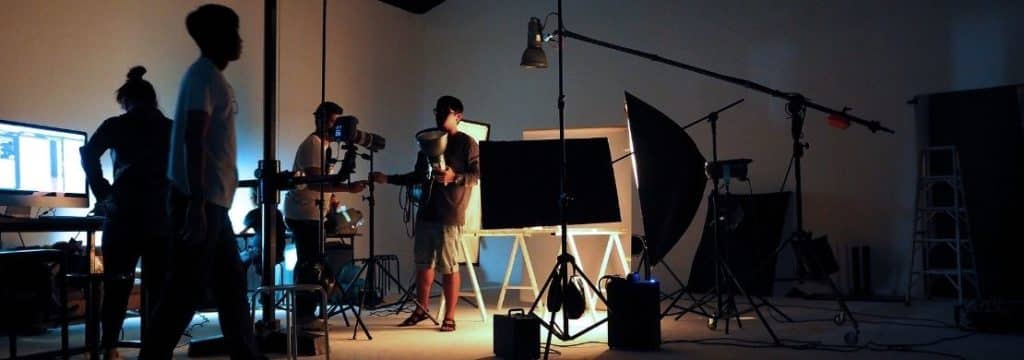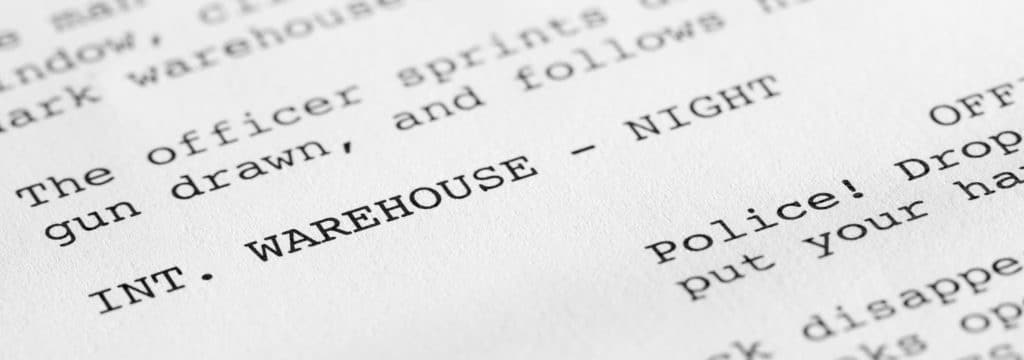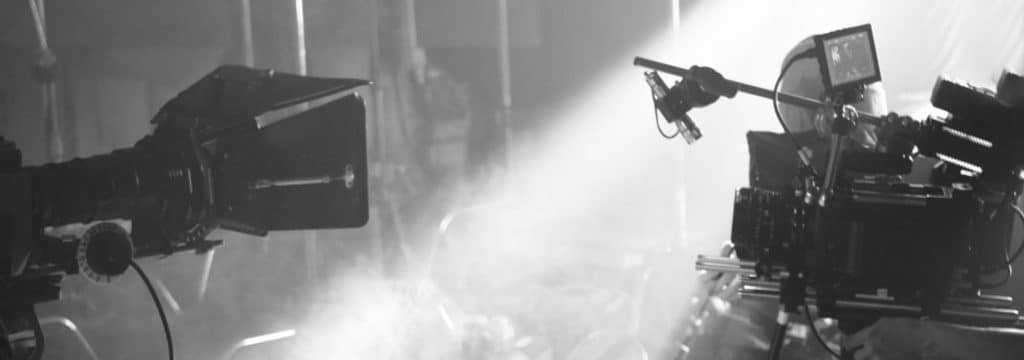
How do words on a script page translate into images posted and shown all over a screen?
If you have that killer idea for a movie but aren’t sure how to put those thoughts in your head into a cohesive story document, you’ve definitely come to the right place.
Filmmaking is a visual medium wholly unique from other forms of storytelling, and screenwriting is, by extension, totally different from other forms of writing. Your movie script can’t waste time and precious page real-estate telling a your reader about what’s happening; you need to be showing them by literally describing the actions on screen.
But you can’t dive right into a blank script document armed with a great billion-dollar idea and no plan. That’s like hitting the road without a map or GPS. Where do you go?
The best place to start is by building your own storytelling roadmap, better known as an outline. Even broader than that, it’s important to plan out your story — describe all of the characters, write out a top-to-bottom timeline, brainstorm various themes — before beginning the actual writing.
For this ideation phase, we recommend using some of Celtx’s screenwriting tools – It’s completely free to get started!
Crafting a compelling story that creates an emotional connection with your audience takes a lot of careful consideration and, like all the best things in the world, a hearty dose of hard work. When you boil it down, the path to success is actually pretty simple: ample dedication to planning and brainstorming, a solid understanding of screenplay elements, and a firm grasp on major storytelling mechanics.
Just like making a meal, it’s crucial to first decide on the perfect recipe, purchase all of your ingredients, and prepare each of them before you actually start cooking.
Likewise, you need to thoughtfully plan your story. Every single screenwriter on the planet begins their screenwriting journey by creating an outline, or a document that presents a short synopsis of the story’s events, major themes, and the relationships between your main characters. This can be as short as three pages and serves as your initial story blueprint. It’s an efficient and industry-standard method for providing your story with a general framework and yourself with a reference as you begin writing.
Recommended Celtx Article: 4 Tips for Overcoming Writer’s Block
You should also write out full biographies of each of your main characters, almost like you’re making a social media profile for them. Explain their demographic information like age, physique, career, etc. but go even deeper and ask yourself questions about their dreams, romantic interests, ambitions, or fears. Strive to truly understand who they are as if they were real people.
In addition to an outline and character bios, it can also be helpful to create a high-level “Beat Sheet”, or a chronological series of single-sentence bullet points that provides a top-to-bottom sequence of events in your story. It’s another version of a synopsis or an outline, but creating it is an exercise in deciding what the defining moments of your story really are.
Structure is a difficult component to master, but it also has a way of defining itself when enough time is spent planning a story (more on this in our “Plot Points” section farther down). Paying keen attention to pacing and cadence throughout is crucial; all it takes is a couple of “boring” scenes in a row and you’ve lost your audience.

You’ve decided to cook a big meal and you’ve selected the appetizer, entree, and dessert. Next up: what ingredients do you need to actually make that meal?
Screenwriting has no “perfect” recipe, but it does have a list of essential ingredients that make any story edible (ok, done with the food parallels).
Let’s start with the absolute basics first, aka Elements of a Screenplay 101. Assuming you have at least a general understanding of these components, we’ll keep these descriptions short before delving into the 201 class.

But wait, there’s more! Those are the basics, but you still need a handful of other ingredients to make your movie script soar. Welcome to Elements of a Screenplay 201.
With these ingredients in-hand, and a well-developed story at your side, you have the tools to open up that blank script document and know precisely what to do.
The last step? Ensuring your story has all the right content in all the right places.

Like a lot of screenwriting terminology that’s found its way into everyday speech, you’re likely familiar with the term “plot point.” But did you know this concept was first coined by the founder of another major storytelling theory called The Paradigm?
A plot point, according to this theory, is “any incident, episode, or event that hooks into the action and spins it around in another direction.” In other words, these are your story’s lynchpins, the crucial moments that anchor everything else in place. Screenplays have dozens and dozens of plots, but The Paradigm defines a chronological list of major plot points in the following order:

Like everything, these are guideposts rather than narrative necessities, but they’re also trusted for a reason. Use them as a starting point and deviate only when you feel confident enough to veer off the track. If you start to get lost, turn the wheel back towards the next major plot point and you’ll be back on solid ground in no time.
Scriptwriting software plays a crucial role in the screenwriting process by providing writers with a professional and easy-to-use interface for writing a film script, television shows, and stage plays.
With these tools, aspiring script writers can lay the groundwork for their stories, develop characters, and create a well-structured plot. Additionally, screenwriting software simplifies the script formatting process, ensuring scripts adhere to industry standards, making them more accessible to someone like a script reader and producer.
Using dedicated scriptwriting software comes with several benefits. First, it helps writers adhere to the screenplay format, which is crucial for a script’s readability and acceptance by industry professionals. It also streamlines the script-writing process, saving time and effort.
Additionally, many scriptwriting software options offer collaboration features, allowing multiple writers to work on a script simultaneously. This can be particularly helpful in the film industry, where teamwork is often the key to success.
In this analysis, we will discuss the top screenwriting software options, including Celtx, Final Draft, and WriterDuet. These platforms cater to different needs and budgets, offering a range of features for writers at various stages of their careers.
Celtx is a highly-rated scriptwriting software trusted by millions of users each year. It offers industry-standard scriptwriting tools in an intuitive interface, making it suitable for both beginners and professionals.
Celtx allows users to write movie scripts, develop stories for film, TV, or games, and even plan a full production (no post production). With cloud-based access and easy collaboration features, Celtx is ideal for those interested in converting their script into a film-ready production.
Celtx doesn’t stop there though, as it also offers great production tools like production reports, call sheets, shot lists and more.
When you research Celtx, you’ll notice that they have a free plan as well as a premium plan with prices starting at $13.49 per month for the Writer Plan, billed annually. They also have monthly plans that are a little more expensive but give you the flexibility to cancel whenever makes sense for you.
In other words, with a monthly plan you could subscribe in March, end your speciation in April, with an annual plan, if you did this you’d be required to pay out the full year.
Another popular software used for screenwriting is Final Draft –recommended by Screencraft.
Final Draft is a tried and tested favorite in the industry, used by entertainment studios like Netflix and Pixar. This award-winning software caters to screenwriters needs, offering an extensive template library and innovative features such as speech-to-text for Mac users.
Final Draft is perfect for professional writers or new writers wanting to familiarize themselves with industry-standard software. The software is available for a one-time payment of $199.99 and they do not have a free plan.
Designed for collaborative writing projects, WriterDuet offers great real-time collaboration features, allowing writing teams to co-write and discuss work live. With cloud-based access, WriterDuet is perfect for remote writers who want to work effectively with others. The software offers educational tutorials and a free plan for beginners, with paid plans starting at $5.99 per month, billed annually.
Screenwriting software really is an essential tool for writers looking to create professional and industry-standard scripts. With options like Celtx, Final Draft, WriterDuet, Arc Studio Pro and Studiobinder, there’s a platform for every budget and need. Whether you’re a beginner or experienced screenwriters, these tools (free and premium) can help you streamline your writing, collaborate with others, and bring your cinematic vision to life.
It’s safe to assume that most screenwriters have a basic understanding of classic story structure, even if they may not adhere to it. These narrative frameworks are better thought of as blueprints rather than rigid templates, or a way to help and support you as you turn ideas into coherent stories that believably emulate the human experience — highs, lows, and all the conflicts in between.
The path to earning that all-important emotional connection with your audience is pretty clear: do your homework, understand the tools at hand, and make sure to stick to the narrative basics…at least as you get started.
Whether or not you’ve left your job to pursue your passions, or your just screenwriting as a hobby, follow this formula structure for long enough and then who knows, day by day, inch by inch – you could be your own Tarantino before you know it!
Andrew Stamm is based in London with his wife and dog. He spends his working time as Partner and Creative Director at Estes Media, a budding digital marketing agency, and performs freelance scriptwriting services on the side. Off the clock he loves to bake, hike, and watch as many niche films as possible. View all posts